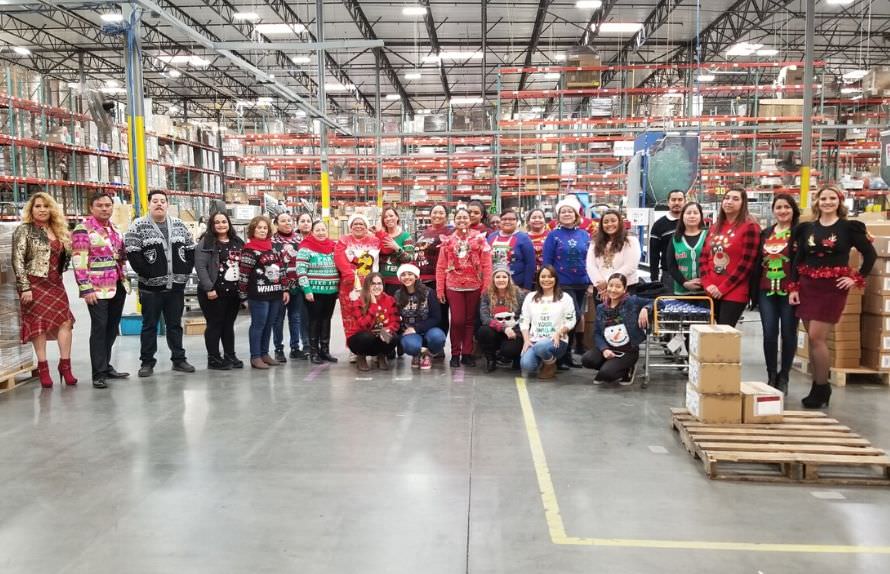
For ecommerce businesses selling products that contain chemicals or hazardous substances, compliance with safety regulations is crucial. These are often known as dangerous goods and can be anything from perfume to consumer electronics.
One of the most essential documents for ensuring safety and regulatory compliance is the Safety Data Sheet (SDS). Whether you’re selling cleaning supplies, cosmetics, or industrial products, understanding the 16 sections of an SDS can help you provide transparency to customers, comply with regulations, and protect your brand from legal risks.

What Is a Safety Data Sheet (SDS)?
An SDS is a standardized document that provides detailed information about the properties, hazards, handling, and disposal of a chemical product. It is a key requirement under the Globally Harmonized System of Classification and Labeling of Chemicals (GHS) and is mandated by regulatory agencies such as OSHA in the U.S.
For ecommerce sellers, understanding an SDS is vital for proper labeling, shipping, and customer safety. Below, we break down the 16 sections of an SDS and how they relate to your ecommerce business.
The 16 Sections of an SDS, Explained
1. Identification
This section provides essential details about the product, including its name, manufacturer, and emergency contact information. For ecommerce companies, this helps in verifying product authenticity and ensuring customer support access.
2. Hazard(s) Identification
Here, you’ll find the classification of the chemical hazards, including warning labels and pictograms. This information is crucial for your product descriptions, allowing you to accurately communicate risks to customers.
3. Composition/Information on Ingredients
This section lists the chemical components of the product, along with concentration percentages. For businesses selling multi-ingredient products, this information is useful for addressing customer inquiries about allergens or hazardous substances.
4. First-Aid Measures
This provides instructions on how to respond to accidental exposure, ingestion, or inhalation. Including this information in product descriptions or FAQs can enhance customer trust and preparedness.
5. Fire-Fighting Measures
This section outlines how to handle fires involving the product, including suitable extinguishing methods. This is especially important for ecommerce sellers handling flammable products like aerosols or solvents.
6. Accidental Release Measures
It describes how to contain and clean up spills or leaks safely. Ecommerce businesses should use this information for training employees and developing emergency response protocols.
7. Handling and Storage
Safe handling is a critical aspect of product safety. This section explains how to properly store and handle the product to prevent accidents or degradation. It’s crucial for warehousing and fulfillment teams to ensure compliance with these guidelines.
8. Exposure Controls/Personal Protection
Here, the recommended safety measures, including necessary protective gear, are detailed. This is useful when guiding customers on proper product usage, particularly for industrial or household chemicals.
9. Physical and Chemical Properties
This section details the product’s appearance, odor, boiling point, solubility, and more. Having this information can help in writing accurate product descriptions and answering technical customer queries.
10. Stability and Reactivity
This explains how the product reacts with other substances and conditions under which it remains stable or becomes hazardous. Knowing these details is vital for safe storage and transportation.
11. Toxicological Information
It provides data on the potential health effects of exposure to the product. E-commerce companies should reference this when responding to customer concerns about product safety.
12. Ecological Information
This section describes the product’s environmental impact, including its biodegradability and toxicity to wildlife. Businesses emphasizing sustainability should highlight this information in marketing efforts.
13. Disposal Considerations
Here, guidelines for proper disposal of the product are outlined. Including disposal instructions in product packaging or online listings can help customers minimize environmental harm.
14. Transport Information
This section includes classification for shipping via air, land, and sea. E-commerce businesses must ensure compliance with these regulations to avoid fines or shipping delays.
15. Regulatory Information
It provides details on compliance with various laws and regulations. Staying informed about these requirements can help your company avoid legal issues and ensure smooth operations.
16. Other Information
This final section includes any additional relevant information, including the date of SDS preparation or updates. Regularly reviewing this ensures your company is working with the most current safety guidelines.
Why SDS Compliance Matters for Ecommerce Companies
- Legal Compliance: Regulatory agencies require SDSs for hazardous products, and failure to comply can result in fines or product bans.
- Customer Safety: Providing accurate hazard information ensures customers use your products safely and responsibly.
- Smooth Shipping & Handling: Many shipping providers require SDSs for transporting hazardous goods, making compliance essential for order fulfillment.
- Brand Trust & Transparency: Clear communication about product safety enhances customer confidence and loyalty.
Bottom Line
Ecommerce companies selling products that involve chemicals or hazardous materials must take SDS compliance seriously. Understanding the 16 sections of an SDS not only helps you meet legal requirements but also ensures safer handling, shipping, and customer use. By incorporating SDS knowledge into your business operations, you can enhance customer trust, reduce liability, and create a more responsible e-commerce brand.
This post was written by Maureen Walsh, Marketing Manager at DCL Logistics. A writer and blogging specialist for over 15 years, she helps create quality resources for ecommerce brands looking to optimize their business.










